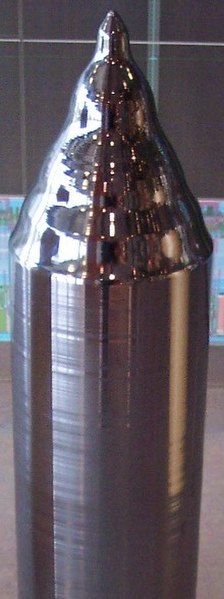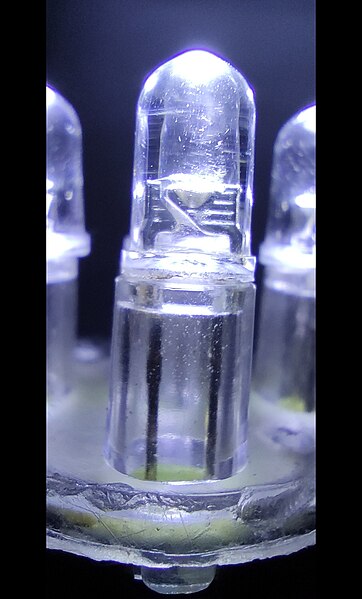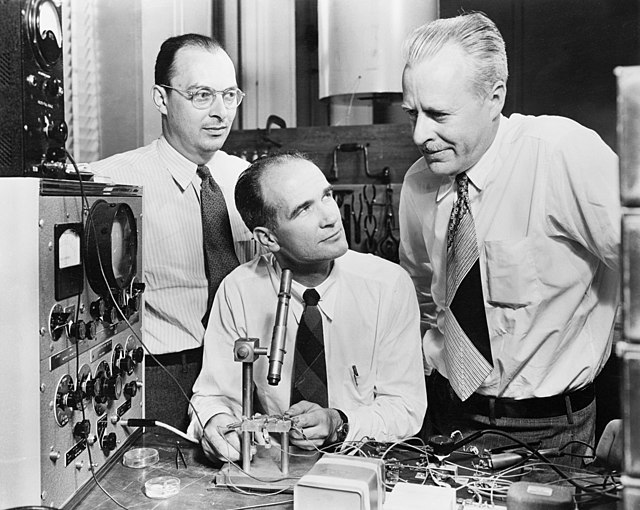A light-emitting diode (LED) is a semiconductor device that emits light when current flows through it. Electrons in the semiconductor recombine with electron holes, releasing energy in the form of photons. The color of the light is determined by the energy required for electrons to cross the band gap of the semiconductor. White light is obtained by using multiple semiconductors or a layer of light-emitting phosphor on the semiconductor device.
LED in white. The LEDs in this picture are housed in "regular" cases, but there are many variants of LEDs.
A bulb-shaped modern retrofit LED lamp with aluminum heat sink, a light diffusing dome and E27 screw base, using a built-in power supply working on mains voltage
Green electroluminescence from a point contact on a crystal of SiC recreates Round's original experiment from 1907.
Close-up of a 1 watt red power led
A semiconductor is a material that has an electrical conductivity value falling between that of a conductor, such as copper, and an insulator, such as glass. Its resistivity generally falls as its temperature rises; metals behave in the opposite way. In many cases their conducting properties may be altered in useful ways by introducing impurities ("doping") into the crystal structure. When two differently doped regions exist in the same crystal, a semiconductor junction is created. The behavior of charge carriers, which include electrons, ions, and electron holes, at these junctions is the basis of diodes, transistors, and most modern electronics. Some examples of semiconductors are silicon, germanium, gallium arsenide, and elements near the so-called "metalloid staircase" on the periodic table. After silicon, gallium arsenide is the second-most common semiconductor and is used in laser diodes, solar cells, microwave-frequency integrated circuits, and others. Silicon is a critical element for fabricating most electronic circuits.

An ingot of monocrystalline silicon
Silicon crystals are the most common semiconducting materials used in microelectronics and photovoltaics.
Karl Ferdinand Braun developed the crystal detector, the first semiconductor device, in 1874.
John Bardeen, William Shockley and Walter Brattain developed the bipolar point-contact transistor in 1947.







